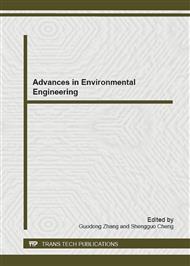p.472
p.476
p.480
p.484
p.488
p.496
p.501
p.505
p.510
Study on Sulfur Dioxide Atmospheric Environmental Capacity of Chengdu Urban Agglomeration
Abstract:
located in the west of Sichuan Basin and composed of Chengdu City, Mianyang City, Deyang City, Ziyang City, and Meishan City, Chengdu urban agglomeration is an area where industry, population and motor vehicles are densely distributed. Therefore, there are acute conflicts between the economic development and atmospheric environmental protection. On one hand, lots of pollutants emitted by industry and motor vehicles enter the atmosphere and adversely affect the environmental air quality. On the other hand, the dense population needs good air quality. Since the current environmental air quality standards cannot fully protect human health and ecological balance, in the calculation of the atmospheric environmental capacity for urban agglomerations, in addition to pollution control investment and environmental quality up to standards, the pollution hazard losses should also be considered. In the present paper, according to the specific conditions of Chengdu urban agglomeration, a multi-source mode and dual-objective optimized atmospheric environmental capacity model was developed with the minimum pollution control investment and pollution hazard losses serving as the objective function and the environmental air quality up to standard serving as the constraint. The Sulfur Dioxide atmospheric environmental capacity of Chengdu urban agglomeration was calculated by using this model so as to provide basic data for the total capacity control of Chengdu urban agglomeration.
Info:
Periodical:
Pages:
488-495
Citation:
Online since:
November 2012
Authors:
Price:
Сopyright:
© 2012 Trans Tech Publications Ltd. All Rights Reserved
Share:
Citation:


